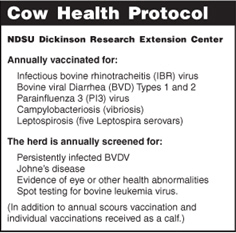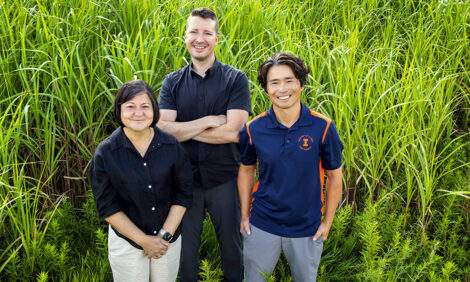



Cows Should Not Be Gift-wrapped
Cows should not be gift-wrapped. Very few questions are ever asked by those planning to purchase replacement cows, writes Kris Ringwall, Beef Specialist. This article was produced by the North Dakota State University Extension Service.Not even simple questions, such as are the cows vaccinated or what vaccinations have the cows received?
The history of a cow is perhaps more important than the wrapping. When buying cows, the data trail and answers to questions regarding health protocol are the necessary ingredients for a productive herd.
If we buy new cows for the herd, producers should explore, question and insist on knowing their history. There are many reasons cows are sold and buyers should know why.
Young cows or bred heifers actually may have been raised and bred for selling. It also could be that a producer may be downsizing or dispersing herd numbers because a stocking rate change has necessitated this action.
Some producers make a general practice of culling older (short-term) cows. These sales can allow the cows to move from tough environments to those operations that have easier availability of feed so these older cows can do quite well and their productive life is lengthened.

So why are so many cows purchased with very little input or inquisitiveness about their history? In many cases, one could almost compare the sale of a cow to an invitation to a gift exchange. In preparing for the gift exchange, we immediately start to think about what we should purchase. We need to be careful so we do not spend more on the wrapping than the gift.
The real value of many gifts is confused with the ornate wrapping. If the gift exchange allows for the selection of the gift by the receiver, almost invariably the first gift picked will be the best wrapped.
The excitement peaks as the gift is opened, but immediately crashes once the gift is exposed. This is not unlike a cow sale.
Excitement escalates as cows arrive in the ring. The auctioneer works the crowd for each nod of the head or twitch of the hand.
All wait for the moment the auctioneer grants the right to buy the pen or the luxury of picking out the special cow(s). Once the bid is selected, the excitement is over until the ring is filled with cows again.
Buying cows is not like going to a gift exchange. The production history is as important as the cow. If you buy new cows for your herd, as noted earlier, explore, question and insist on knowing their history. There should be nothing hidden and be particularly leery if the cow has a bow on her back.
Why the fuss? Simply put, herd biosecurity is the reason for the fuss.
Replacement females from a sale barn may not pose a threat to your herd's biosecurity. However, one cannot afford to bring health problems into an existing production herd.
Producers need to continue the high industry standards by controlling access to their herd. Cows that have not been inspected by a veterinarian should not be brought into the herd. In addition, the cows should be quarantined and evaluated for common transmittable diseases.
Cows sold by the Dickinson Research Extension Center do not come in a wrapped package. All cows, including those sold, annually are vaccinated for infectious bovine rhinotracheitis virus, bovine viral diarrhea types 1 and 2, parainfluenza 3 virus, campylobacteriosis (vibriosis) and leptospirosis (five leptospira serovars).
The cows also are screened for persistently infected bovine viral diarrhea virus and Johne's disease and inspected for any evidence of eye or other health abnormalities. The herd also is involved with testing for bovine leukemia virus.
Additional vaccinations are given depending on the need, such as for calf scours, and all the cows would have received calf vaccinations as well. Cows should not be gift- wrapped, but if you do buy gift-wrapped cows, don't be surprised at what you get.
Ask questions and expect real answers. Your livelihood depends on it.
May you find all your ear tags.
December 2008


